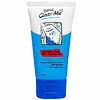Garnier Super UV Cooling Watergel Sunscreen SPF 50+ Versus Dermies Clear Me Acne Smooth Sunscreen SPF 30
What's inside
What's inside
 Key Ingredients
Key Ingredients

 Benefits
Benefits

 Concerns
Concerns

 Ingredients Side-by-side
Ingredients Side-by-side

Water
Skin ConditioningEthylhexyl Methoxycinnamate
UV AbsorberAlcohol Denat.
AntimicrobialIsopropyl Palmitate
EmollientDiethylamino Hydroxybenzoyl Hexyl Benzoate
UV FilterBis-Ethylhexyloxyphenol Methoxyphenyl Triazine
Skin ConditioningEthylhexyl Triazone
UV AbsorberSilica
AbrasiveDipropylene Glycol
HumectantCoco-Caprylate/Caprate
EmollientCetearyl Alcohol
EmollientDiisopropyl Sebacate
EmollientCI 42090
Cosmetic ColorantTocopherol
AntioxidantAscorbyl Glucoside
AntioxidantHydroxyacetophenone
AntioxidantSodium Stearoyl Glutamate
CleansingSodium Dodecylbenzenesulfonate
CleansingPhenoxyethanol
PreservativePEG-20
HumectantPEG-8 Laurate
EmulsifyingTrisodium Ethylenediamine Disuccinate
Ammonium Acryloyldimethyltaurate/Vp Copolymer
Limonene
PerfumingMenthol
MaskingXanthan Gum
EmulsifyingLinalool
PerfumingIsocetyl Stearate
EmollientParfum
MaskingCarbomer
Emulsion StabilisingGeraniol
PerfumingCetearyl Glucoside
EmulsifyingCitrus Limon Fruit Extract
MaskingPotassium Hydroxide
BufferingBHT
AntioxidantCitral
PerfumingInulin Lauryl Carbamate
Emulsion StabilisingStyrene/Acrylates Copolymer
Glycerin
HumectantWater, Ethylhexyl Methoxycinnamate, Alcohol Denat., Isopropyl Palmitate, Diethylamino Hydroxybenzoyl Hexyl Benzoate, Bis-Ethylhexyloxyphenol Methoxyphenyl Triazine, Ethylhexyl Triazone, Silica, Dipropylene Glycol, Coco-Caprylate/Caprate, Cetearyl Alcohol, Diisopropyl Sebacate, CI 42090, Tocopherol, Ascorbyl Glucoside, Hydroxyacetophenone, Sodium Stearoyl Glutamate, Sodium Dodecylbenzenesulfonate, Phenoxyethanol, PEG-20, PEG-8 Laurate, Trisodium Ethylenediamine Disuccinate, Ammonium Acryloyldimethyltaurate/Vp Copolymer, Limonene, Menthol, Xanthan Gum, Linalool, Isocetyl Stearate, Parfum, Carbomer, Geraniol, Cetearyl Glucoside, Citrus Limon Fruit Extract, Potassium Hydroxide, BHT, Citral, Inulin Lauryl Carbamate, Styrene/Acrylates Copolymer, Glycerin
Water
Skin ConditioningHydrogenated Polyisobutene
EmollientAlcohol
AntimicrobialEthylhexyl Methoxycinnamate
UV AbsorberPropanediol
SolventHydroxyethyl Acrylate/Sodium Acryloyldimethyl Taurate Copolymer
Emulsion StabilisingTitanium Dioxide
Cosmetic ColorantSalicylic Acid
MaskingButyl Methoxydibenzoylmethane
UV AbsorberZinc Gluconate
Skin ConditioningPhenoxyethanol
PreservativeAmylopectin
Dextrin
AbsorbentOctocrylene
UV AbsorberButylene Glycol
HumectantPolyacrylate Crosspolymer-6
Emulsion StabilisingXanthan Gum
EmulsifyingSilica
AbrasiveChlorphenesin
AntimicrobialBHT
AntioxidantBisabolol
MaskingDimethicone
EmollientLecithin
EmollientWater, Hydrogenated Polyisobutene, Alcohol, Ethylhexyl Methoxycinnamate, Propanediol, Hydroxyethyl Acrylate/Sodium Acryloyldimethyl Taurate Copolymer, Titanium Dioxide, Salicylic Acid, Butyl Methoxydibenzoylmethane, Zinc Gluconate, Phenoxyethanol, Amylopectin, Dextrin, Octocrylene, Butylene Glycol, Polyacrylate Crosspolymer-6, Xanthan Gum, Silica, Chlorphenesin, BHT, Bisabolol, Dimethicone, Lecithin
Ingredients Explained
These ingredients are found in both products.
Ingredients higher up in an ingredient list are typically present in a larger amount.
BHT is a synthetic antioxidant and preservative.
As an antioxidant, it helps your body fight off free-radicals. Free-radicals are molecules that may damage your skin cells.
As a preservative, it is used to stabilize products and prevent them from degrading. Specifically, BHT prevents degradation from oxidation.
The concerns related to BHT come from oral studies; this ingredient is currently allowed for use by both the FDA and EU.
However, it was recently restricted for use in the UK as of April 2024.
Learn more about BHTEthylhexyl Methoxycinnamate is an organic compound that provides UVB protection. It often goes by the more common name of octinoxate. It is created from methoxycinnamic acid and 2-ethylhexanol.
Ethylhexyl Methoxycinnamate absorbs UVB rays with wavelengths between 280-320 nm. UV absorbers protect your skin by using chemical reactions to convert UV rays into heat and energy.
UVB (290-320 nm) rays emit more energy than UVA rays. They are capable of damaging DNA, causing sunburns and are thought to be linked to skin cancer.
The state of Hawaii has banned sunscreens containing octinoxate due to its potential impact on coral reefs. More research is needed to bridge gaps in this research. The European Union allows higher levels of octinoxate in sunscreens than the US and Australia.
Ethylhexyl Methoxycinnamate is oil soluble. It is not stable and may lose efficacy when exposed to sunlight.
Learn more about Ethylhexyl MethoxycinnamatePhenoxyethanol is a preservative that has germicide, antimicrobial, and aromatic properties. Studies show that phenoxyethanol can prevent microbial growth. By itself, it has a scent that is similar to that of a rose.
It's often used in formulations along with Caprylyl Glycol to preserve the shelf life of products.
Silica, also known as silicon dioxide, is a naturally occurring mineral. It is used as a fine, spherical, and porous powder in cosmetics.
Though it has exfoliant properties, the function of silica varies depending on the product.
The unique structure of silica enhances the spreadability and adds smoothness, making it a great texture enhancer.
It is also used as an active carrier, emulsifier, and mattifier due to its ability to absorb excess oil.
In some products, tiny microneedles called spicules are made from silica or hydrolyzed sponge. When you rub them in, they lightly polish away dead skin layers and enhance the penetration of active ingredients.
Learn more about SilicaWater. It's the most common cosmetic ingredient of all. You'll usually see it at the top of ingredient lists, meaning that it makes up the largest part of the product.
So why is it so popular? Water most often acts as a solvent - this means that it helps dissolve other ingredients into the formulation.
You'll also recognize water as that liquid we all need to stay alive. If you see this, drink a glass of water. Stay hydrated!
Learn more about WaterXanthan gum is used as a stabilizer and thickener within cosmetic products. It helps give products a sticky, thick feeling - preventing them from being too runny.
On the technical side of things, xanthan gum is a polysaccharide - a combination consisting of multiple sugar molecules bonded together.
Xanthan gum is a pretty common and great ingredient. It is a natural, non-toxic, non-irritating ingredient that is also commonly used in food products.
Learn more about Xanthan Gum